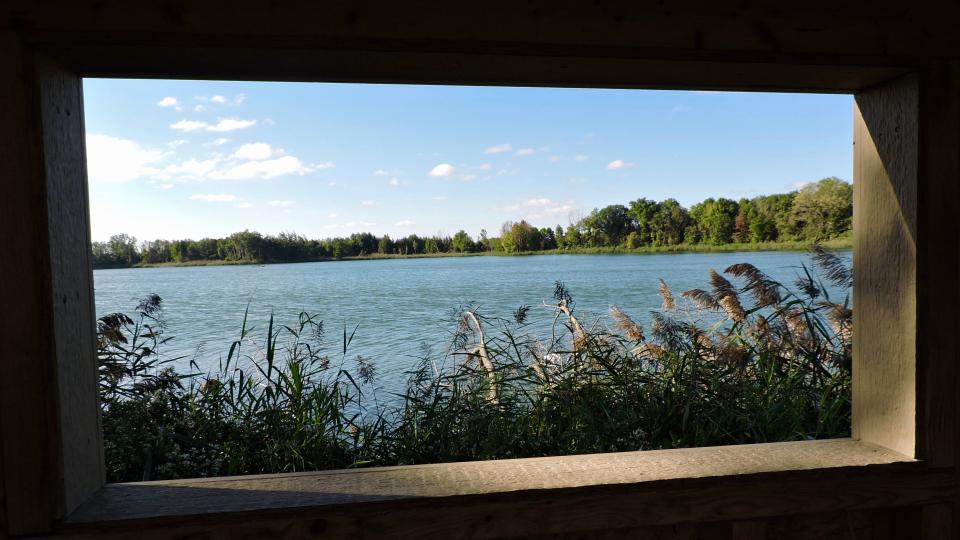Elizabeth Sutliff Dulfer: Her journey from slave to wealthy Bergen County businesswoman
Elizabeth Sutliff Dulfer was well into her 50s when she began her rise to prominence as one of Bergen County's wealthiest businesswomen and landholders.
The late start wasn't her doing. The rise certainly was.
Born in 1790 without money, property and autonomy, Dulfer spent the first 31 years of her life a slave. She was degraded as property on William Campbell's farm outside modern-day Hackensack, to which she would return in 1847 to buy untapped clay pits formed by glacial Lake Hackensack.
In all, she bought 87 acres that year. The land, like Campbell's farm, rode the west bank of the Hackensack River in the vicinity of the area's toll bridge. Most of it was in what is now Little Ferry.
Dulfer knew its worth.
The stalks of spartina grass that covered the lowlands hid easily accessible deposits of clay. The river itself offered swift and efficient transport to area brickmakers and potters.

The acquisition was an intrepid act of independence, Arnold Brown wrote in his 1986 biography of Dulfer, "The Elizabeth Sutliff Dulfer Story."
For decades after Dulfer's arrival, clay mines dotted the Hackensack lowlands. One of the largest operations was run out of a six-story pit at the end of Mehrhof Road. Now a fenced-off pond named after the clay-mining and brickmaking Mehrhof family, the flooded pit is best known for birdwatching.
Black History Month:Tiny clue led Bergen woman on 3-year quest to find Black cemetery. Now it's been located
While the Mehrhof name has been well preserved on maps, some local historians credit Dulfer for kick-starting the area's clay-based industry. Dulfer mined the clay on her farm for nearly 20 years, feeding artisanal potters and bringing rise to the brickmakers. It wasn't easy, however.

"Life for Dulfer was hard, and the land desolate," Brown wrote in a separate biography. "The clay had to be dug out of pits by shovels and loaded into horse-drawn wagons. It was then transported to the loading docks to await shipping. Sloops plied the river, taking clay and clay products to Jersey City, Newark, Boston and other places."
For a business owner, Dulfer's level of self-made success was extraordinary, Brown said. For a Black woman born as a slave, it was historic.
No one would have blamed Dulfer for leaving Bergen County and never returning. For a spell, it seemed that would be the case. "Betty" — as her deed of manumission called her — was officially freed on June 17, 1822. Local records are unclear about what led to her emancipation on that late-spring day, and for the next 25 years, Dulfer would have little connection with the county.
North Jersey's history:Slavery's legacy is written all over North Jersey, if you know where to look
After gaining her freedom, Dulfer ended up in New York City. Records show she was living on Spring Street with her first husband, Alexander Sutliff, a native Jamaican and schoolteacher. They attended church at Abyssinian Baptist's original parish on Anthony Street — now known as Worth Street — New York City municipal records show. Bergen County's clay evidently remained in Dulfer's thoughts.
Dulfer and Sutliff left for the banks of the Hackensack together. They weren't together long, however. Sutliff died between 1851 and 1855.
Dulfer's business progressed seemingly undeterred. Her personal life followed suit. Dulfer remarried in 1859. Her new husband, John Bernardus Conrad Dulfer, was a recent arrival from Holland. He was also 31 years her junior.
Her new husband joined the clay operation and led the effort to sell crops off the adjacent 50 acres of farmland. Census records from 1860 show that the Dulfers had a horse, grew potatoes and made about 100 pounds of butter per year from a herd of four cattle.
By 1867, Dulfer would end her mining days. With her property's value now well established, she sold it for $15,200 — nearly 12 times her purchase price. The influx of capital allowed her to purchase a nearby home on 8 acres and amass more than 20 additional acres across New Barbados, Hackensack and Lodi over the next dozen years, according to Brown. She also invested in high-interest mortgages before her death in 1880 at the age of 90.
Dulfer, like some other prominent African Americans from the age and the area, was buried in Little Ferry's famous Gethsemane Cemetery. The historic cemetery lies just south of many old clay pits, where many associated with local brickyards were buried. It contains the remains of about 500 African Americans who died between roughly 1866 and 1920. It is now under the care of the Bergen County government.
John Dulfer was also buried there after his death in February 1885. His was the cemetery's first documented Caucasian burial, according to National Register of Historical Places records.
This article originally appeared on NorthJersey.com: Elizabeth Dulfer: From slave to wealthy Bergen County businesswoman

